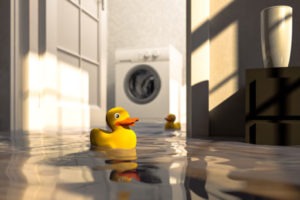Ah, spring! That special time of year when flowers bloom, and basements flood – not just from not just from heavy spring rain, but from melting snow and ice that the ground can no longer absorb.
That makes now the perfect time to shore up your defenses against basement flooding and sewage back-up.

Sump Pumps Explained
Already have a sump pump? Then you’re off to a good start. Still, take a few minutes to ensure it’s in good working order. But also bear in mind that main sump pumps run on electricity. Why is that important? Because if you lose power, your sump pump & Ejector pump will shut off in mid-stream.
That’s why we encourage you to further protect your basement with a back-up sump pump, one that will activate as soon as your main pump shuts off, no matter what the cause. The two pumps, working in tandem, should provide all the protection you need against water intrusion.
The Case for Sewage Ejector Pumps
For the most part, your home’s plumbing system uses gravity to ensure proper waste removal. Homes with finished basements, however, need a sewage ejector pump to move waste “up” and out of the home through your disposal pipes.
In your basement, however, things don’t quite work that way. That’s because your sink, shower and toilet are installed below your other plumbing points which are installed in the ceiling. Therefore, your basement plumbing operates without the boost gravity provides for your upstairs plumbing.
Installing a sewage ejector pump can prevent a raw sewage backup problem. Most pumps employ a tank that holds a certain amount of sewage. The pump’s float (just like in your toilets) rises with the sewage and signals the pump to cycle on. Once the pump is running, the sewage moves out of the tank and into the plumbing pipes, where it joins the main sewer lines and leaves the home.
Protect Your Basement from Flooding
If you live in a home or neighborhood prone to basement flooding, contact Eagle Service Company today for a no-obligation proposal on how to shore up your anti-flooding defenses.


